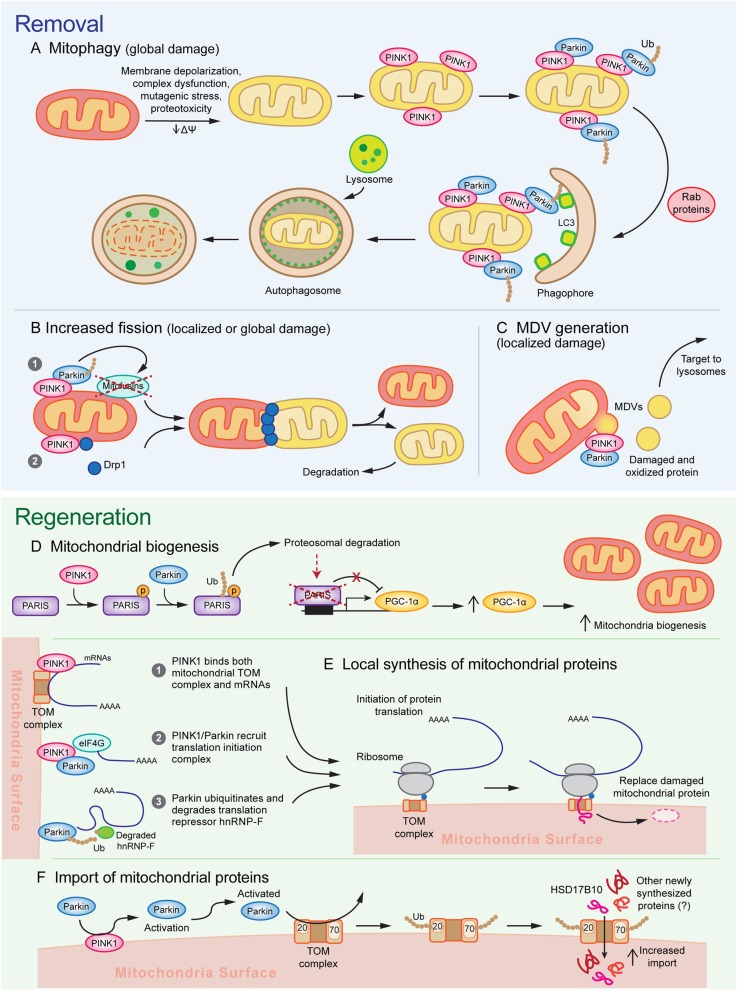Fig. 1.
A model for the multifunctional role of PINK1/Parkin in mitochondrial quality control. Activation of PINK1/Parkin triggers multiple sequential and parallel mechanisms of a-c mitochondrial removal and d, e mitochondrial regeneration. Different mechanisms of mitochondrial removal are engaged depending on the severity of damage. a Mitochondria experiencing global/widespread damage undergo mitophagy, in which massive PINK1/Parkin activation recruits autophagosome membranes via Rab proteins and LC3 and is subsequently degraded by lysosomes, and b undergo mitochondrial fission caused by PINK1/Parkin dependent mitofusin degradation and Drp1 recruitment. c Focal damage leads to the activation of mitochondrial fission as well as mediate the Drp1-independent formation of MDVs, which allow for removal and destruction of small pockets of damaged mitochondrial components and limits the nonspecific destruction of functioning subdomains. d To replace the mitochondrial components removed through removal mechanisms, PINK1 phosphorylates PARIS and primes it for ubiquitination by Parkin. Subsequent proteosomal degradation of PARIS relieves PARIS-mediated transcriptional repression of PGC-1α, thereby stimulating mitochondrial biogenesis. e Furthermore, recent evidence suggests that PINK1/Parkin may promote local synthesis of nuclear-encoded mitochondrial proteins by bringing mRNAs encoding mitochondrial genes to the mitochondria and promoting translation initiation. f PINK1/Parkin activation further leads to the ubiquitination of TOM complex proteins Tom70 and Tom20, which promotes transport of newly synthesized proteins into the mitochondria, possibly as a means to facilitate the replacement of damaged protein degraded through other mechanisms

